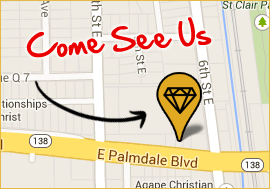The controversy surrounding the recutting of the Wittelsbach diamond reminds us of an additional dimension to diamond valuation

If you have a diamond you’d like to use as the basis for a collateral loan, it’s crucial that you not only get the stone appraised by an expert, but also look into its provenance in the case of an old stone or a piece of jewelry from a famous design house. As the story of the Wittelsbach diamond shows, experts may disagree as to whether it’s the history of the stone or its intrinsic characteristics that are more valuable.
About the Fabled Wittelsbach Blue
The Wittelsbach Blue has been shrouded in mystery for a good portion of its recent history. Thought to have come from the Golconda mines in India, the stone was given to a Spanish princess as an engagement gift in 1664. Intermarriage of royal families eventually brought the stone to Bavaria where it became part of the crown jewels. In 1964 the diamond passed into private hands and then vanished from the public eye for over 50 years.
The Wittelsbach Blue surfaced at auction in 2008 and was sold for $24.3 million, one of the highest prices ever paid for a diamond. But was the buyer after the fabled Wittelsbach Blue for its historical value and status or just for its size, color, and clarity?
Apparently it was the latter, for the buyer, billionaire diamond dealer Laurence Graff, had the stone recut to improve upon the workmanship of the original 17th century craftsmen. The diamond was reduced from 35.5 carats to 31 carats and its clarity, brilliance, and grade were improved.
Graff loaned the diamond to the Smithsonian for display, but many experts and historians believe that the altered stone now has little historical value. However, considering the incredibly strong market for colored diamonds of all shades, it is hardly surprising that Graff chose to recut the diamond to improve its value.
What About Your Diamond Jewelry?
While a stone as famous as the Wittelsbach Blue is hardly going to show up at a pawn shop, other types of valuable diamond jewelry certainly will. Before using a piece of vintage diamond jewelry to secure a collateral loan, be sure you know what it is really worth. Our expert appraisers can help you. We’ll not only evaluate the diamonds on their own merits, but also consider the additional value that the name of the designer may bring. Stop by today to get your diamond jewelry appraised.


